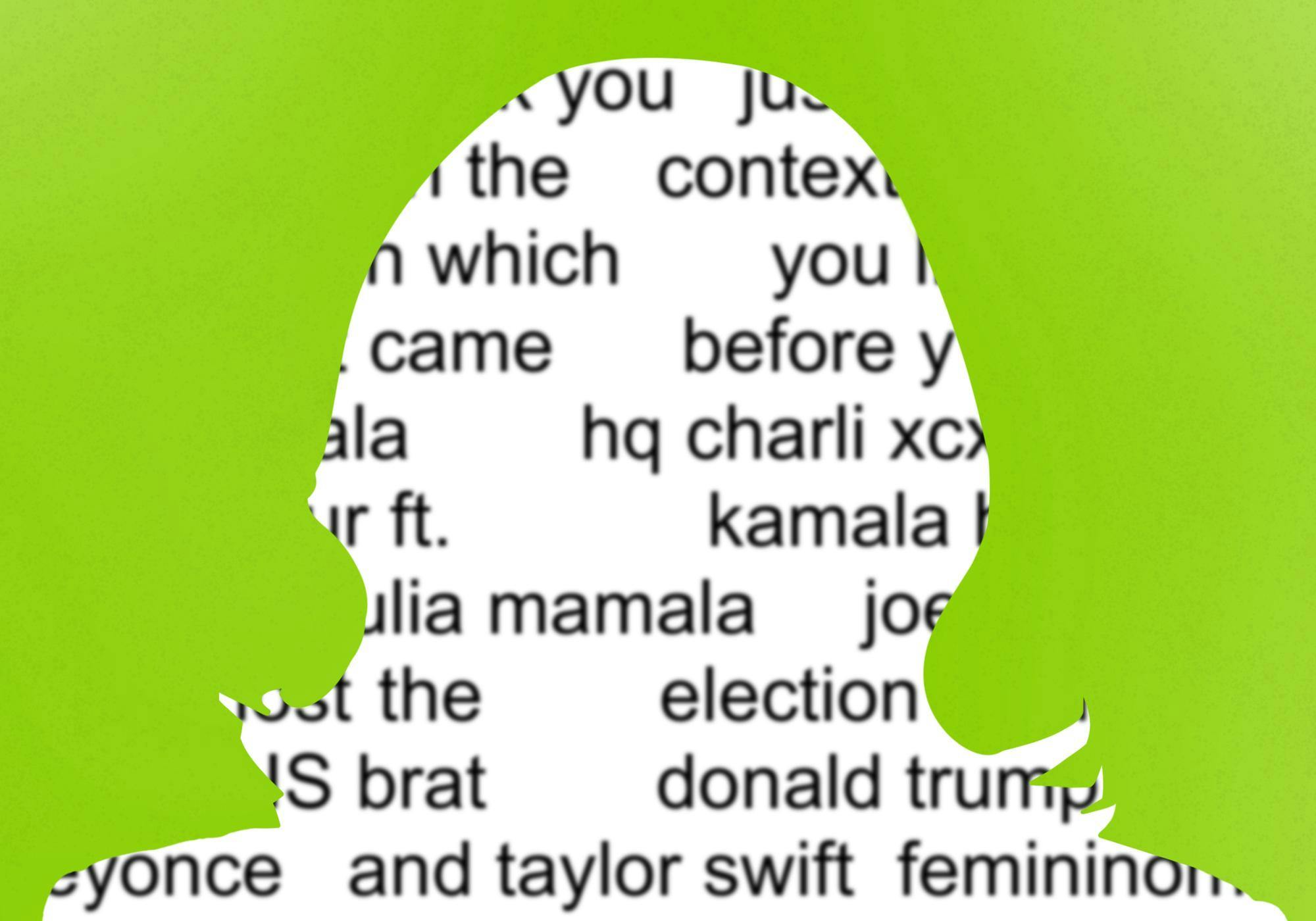On July 21, 2024, at 1:46 p.m., President Joe Biden announced his decision to drop out of the presidential race. By 2:13 p.m. he endorsed Vice President Kamala Harris as his successor. And by 9 p.m. that same night, the fledgling Harris campaign received perhaps its most important endorsement, one that would influence how the campaign would appeal to young voters across the nation in the coming months.
British pop artist Charli XCX, whose album “brat” and its infectious lime green colorway permeated much of the summer, endorsed Harris with a simple tweet reading “kamala IS brat.”
It didn’t take long for Harris campaign officials to run with the endorsement. On the same day Biden announced his departure from the race, a freshly rebranded TikTok account, “Kamala HQ,” posted the endorsement with the caption “ready to provide context.”
Since then, the Harris campaign’s social media pages have adopted a strikingly young, online method of campaigning. TikToks, Instagram reels and tweets from those accounts often reference popular artists like Chappell Roan, take jabs at Trump using meme-laden language and generally contain content tailored for an ultra-online, Gen Z audience.
At Michigan State University, this strategy appears to have paid off, motivating college-aged voters in a way the Biden campaign had previously been unable to.
President of MSU College Democrats and political theory and constitutional democracy senior Liam Richichi said the club’s first meeting of the 2024-25 school year was the largest in the club’s history, a fact he partially attributed to newfound energy around Harris.
“I think (the Harris campaign) is doing a great job in terms of following what’s new and what’s fresh, because it’s changing almost every day,” Richichi said. “There’s energy online and that’s translating to people getting interested in turning out in person, helping out in any way that they can.”
Beyond getting their members to show up on election day to cast their vote for Harris, Richichi said, the College Democrats are also looking to mobilize members to canvass on and off campus, work tables to get people registered to vote and generally “get people engaged.”
The work being undertaken by the College Democrats aims to bolster turnout among young voters, a demographic that is relatively inconsistent at the polls compared to their older counterparts. In 2020, 38.3% of Michigan’s young registered voters did not vote, and in 2022 that percentage rose to 59.2%, according to the Michigan Department of State.
Director of the American Community Project Dante Chinni said young voters tend to not show up at the polls for various reasons, including that they don't consider voting to be a crucial part of their civic duty and the fact that many simply have “a lot going on in their lives.”
If Democrats want a chance to win in Michigan, Chinni said, they’ll have to make sure they can convince college students to turn out.
So far, Chinni said, Democrats’ online-heavy advertising has done a good job familiarizing young people with Harris. He added that social media’s short-form nature plays well into the quick, pointed attacks that the Harris campaign deploys against Trump and JD Vance.
“These are really good points to hit, and they’re pretty quick to hit on social media,” Chinni said. “Just in terms of ‘Harris is different, Harris is younger, look at how old Donald Trump is.’ These are things that are easy to meme.”
If the strategy ultimately pays off for Democrats, Chinni said, “we’ll know in November.”
In the meantime, the College Democrats continue to drive up support on MSU’s campus and energize voters. Last Tuesday night, the club hosted a debate watch party in Case Hall that attracted close to one hundred students. An at-capacity crowd that filled The Graduate Hotel in downtown East Lansing later that week provided another example of the heightened political energy among the student body.
Social relations and policy freshman Brayden Woodley, who was at the watch party, said Harris’ online strategy could be working because it meets young people where they get their news. According to the Pew Research Center, around half of TikTok users aged 18-29 use the app to keep up with politics and news.
“A young person isn’t going to read the newspaper all the time, even an online newspaper,” Woodley said. “So, definitely, TikTok and Instagram is the way to go for (reaching) young voters.”
Richichi echoed that sentiment, saying that the online infrastructure and demand from young people has created a large market that the Harris campaign has been smart in marketing to.
“It’s having a big impact,” Richichi said. “I’m excited to see what other trends they come up with and what else they follow along with.”
Support student media!
Please consider donating to The State News and help fund the future of journalism.
Discussion
Share and discuss “The Harris campaign has Gen Z’s attention, does it have its votes?” on social media.





